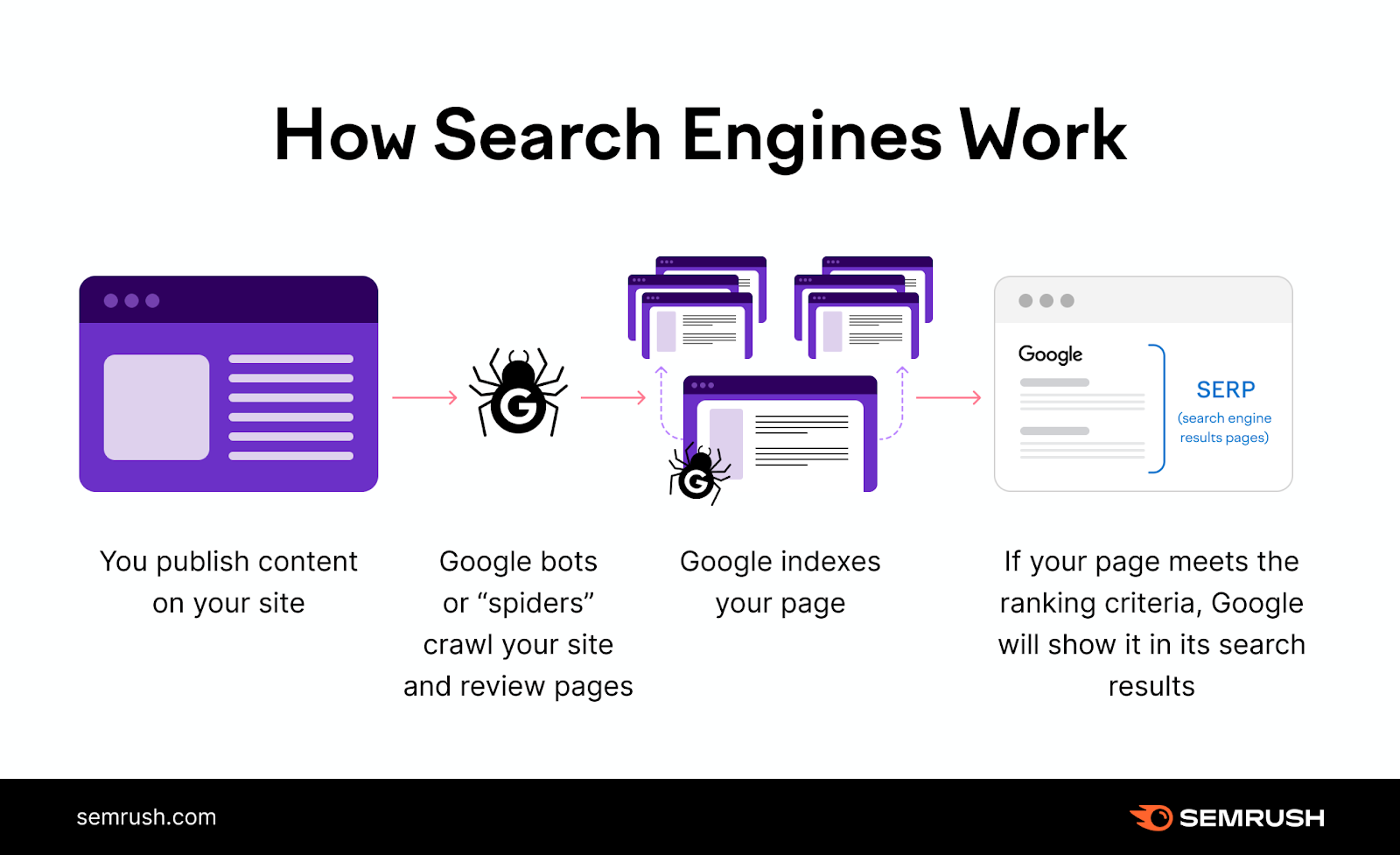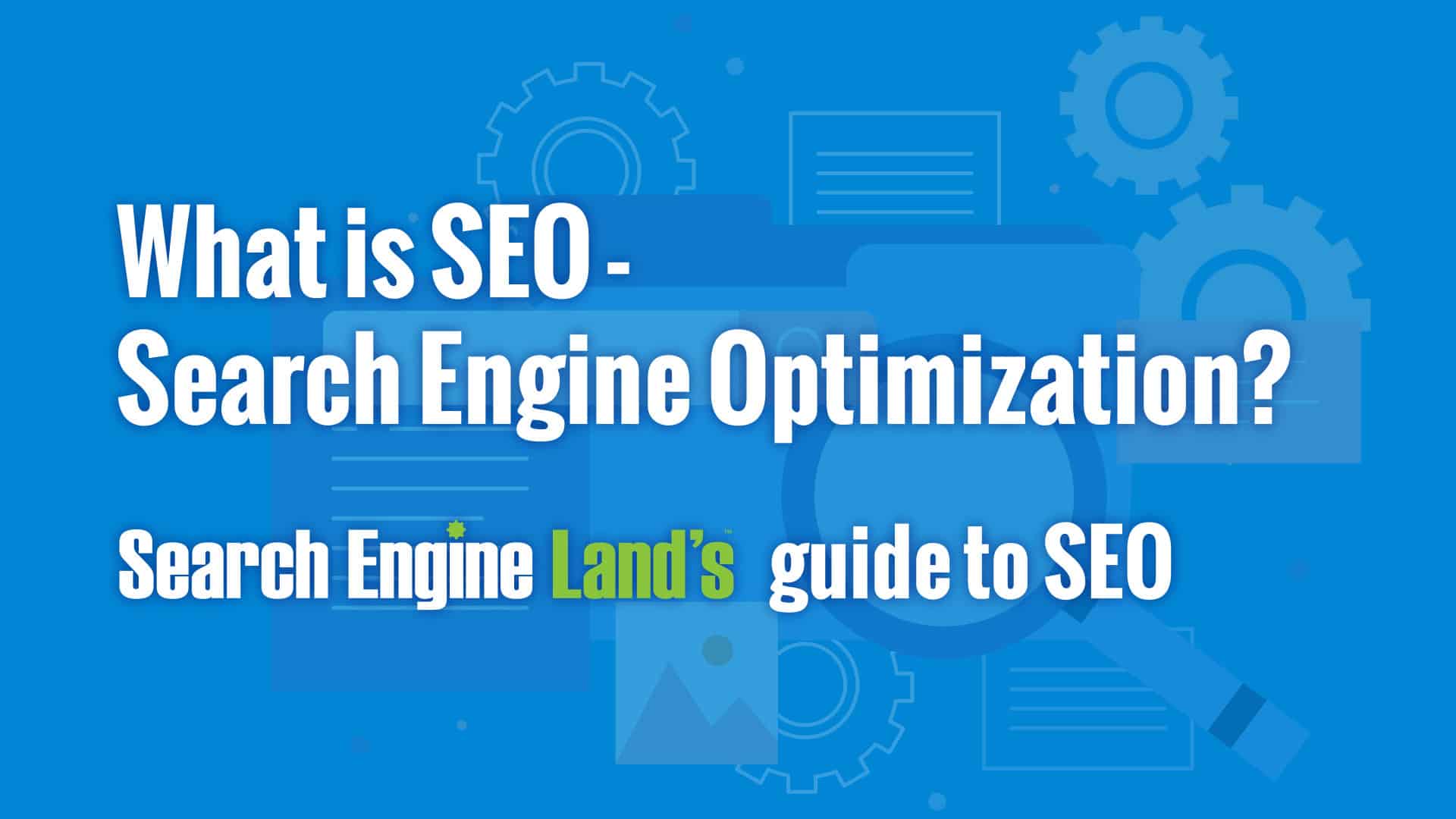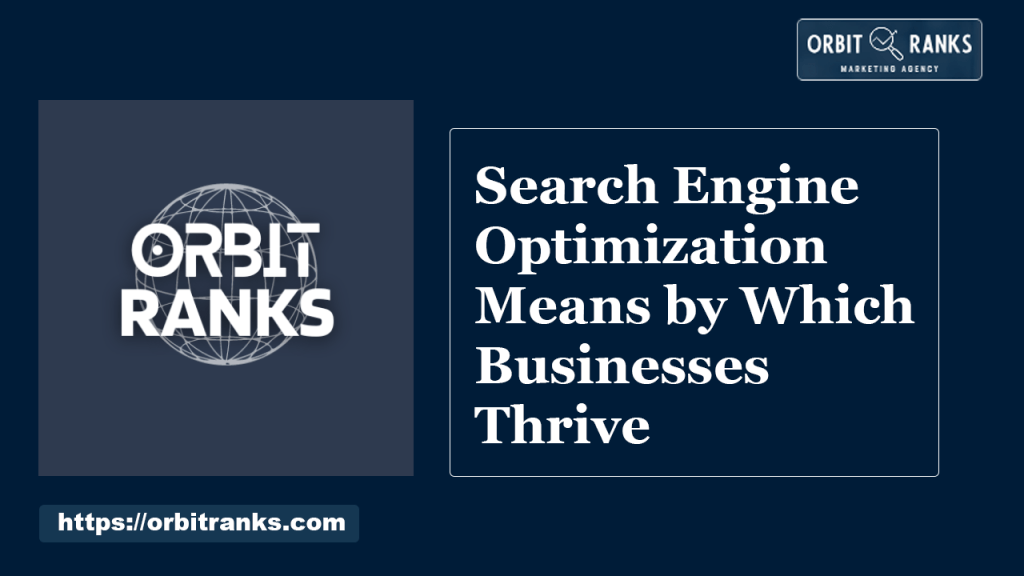Search Engine Optimization (SEO) is a means by which websites improve their visibility on search engines. It drives organic traffic and enhances online presence.
SEO involves optimizing content, using relevant keywords, and ensuring a website is user-friendly. It helps businesses reach their target audience more effectively. Quality content, proper meta tags, and backlinks are crucial components. SEO also involves technical aspects like improving site speed and mobile compatibility.
Regular updates and monitoring are essential for maintaining good search rankings. By implementing these strategies, businesses can achieve better search engine rankings and attract more visitors. SEO is a powerful tool for online marketing success and can significantly impact a company’s growth and profitability.

Credit: www.semrush.com
Keyword Research
Keyword research is the cornerstone of effective Search Engine Optimization (SEO). It helps you understand what your audience is searching for. This process involves identifying the right keywords and phrases. These keywords should match the intent of your target users. It’s essential for driving relevant traffic to your website.
Identifying Relevant Keywords
Identifying relevant keywords is crucial for your SEO strategy. Start by brainstorming a list of words related to your business. Think about what your customers might search for. Use these ideas to build your initial keyword list.
Next, analyze your competitors. See which keywords they rank for. This can give you an idea of what works in your industry. You can also look at industry forums and social media. These platforms can provide insights into popular topics and search terms.
Consider the search intent behind each keyword. Search intent can be informational, navigational, or transactional. Choose keywords that match the intent of your audience. This increases the chances of converting visitors into customers.
Tools For Keyword Analysis
Several tools can help with keyword analysis. They provide data on search volume, competition, and trends. Here are some popular keyword research tools:
- Google Keyword Planner: This free tool helps you find relevant keywords. It provides data on average monthly searches and competition.
- Ahrefs: A comprehensive SEO tool that offers keyword analysis. It provides insights into keyword difficulty and traffic potential.
- SEMrush: This tool offers detailed keyword research and competitor analysis. It provides information on keyword difficulty and search volume.
- Ubersuggest: A free tool that offers keyword suggestions. It provides data on search volume and competition.
Using these tools, you can refine your keyword list. Focus on keywords with high search volume and low competition. This increases your chances of ranking higher on search engines.
Perform keyword analysis regularly. Search trends and user behavior change over time. Regular analysis helps you stay ahead of the competition.
| Tool | Features | Cost |
|---|---|---|
| Google Keyword Planner | Search volume, competition | Free |
| Ahrefs | Keyword difficulty, traffic potential | Paid |
| SEMrush | Keyword research, competitor analysis | Paid |
| Ubersuggest | Keyword suggestions, search volume | Free |

Credit: searchengineland.com
On-page Optimization
On-Page Optimization is crucial for improving your website’s search engine ranking. It focuses on optimizing individual web pages. This process ensures higher visibility and more relevant traffic from search engines.
Content Quality
High-quality content is vital for effective On-Page Optimization. Ensure your content is unique, informative, and engaging. Use short paragraphs and simple sentences. Avoid jargon and complex words. Keep the reader’s interest with clear and concise language.
- Use keywords naturally within the content.
- Ensure content is relevant to the topic.
- Include subheadings to break up the text.
- Add images and videos to enhance understanding.
Table of keyword density can be helpful:
| Keyword | Density (%) |
|---|---|
| Main Keyword | 1-2% |
| Secondary Keywords | 0.5-1% |
Meta Tags And Descriptions
Meta Tags and Descriptions play a crucial role in On-Page Optimization. They help search engines understand the content of your page. Meta tags include the and description.
- Keep the title tag under 60 characters.
- Write a meta description under 160 characters.
- Include primary keywords in both.
- Ensure they are relevant and engaging.
Example of a well-optimized meta tag:
Effective meta tags can improve your click-through rate from search results.
Off-page Optimization
Off-Page Optimization is a vital part of Search Engine Optimization (SEO). It involves activities outside your website to improve its ranking. Off-Page Optimization focuses on creating high-quality backlinks and enhancing brand visibility.
Backlink Strategies
Creating backlinks is essential for Off-Page Optimization. Backlinks from reputable sites boost your site’s authority.
- Guest Blogging: Write articles for other websites.
- Broken Link Building: Find and replace broken links with your content.
- Directory Submissions: Submit your website to online directories.
Use a mix of these strategies for the best results. A variety of backlinks looks natural to search engines.
Social Media Integration
Integrate your SEO efforts with Social Media. Social media platforms can drive traffic and improve your site’s ranking.
- Share Content: Post your content on social media regularly.
- Engage with Users: Respond to comments and messages.
- Use Hashtags: Use relevant hashtags to reach a wider audience.
Social media integration helps in building brand awareness. It also improves your online presence.
Technical Seo
Technical SEO focuses on improving a website’s technical aspects. These improvements help search engines crawl and index your site better. By addressing technical issues, you enhance user experience and search engine rankings.
Site Speed
Site speed is crucial for both user experience and SEO. A fast-loading site keeps visitors engaged. It also reduces bounce rates. Google ranks faster sites higher. Here are some tips to improve site speed:
- Optimize images by compressing them.
- Use a content delivery network (CDN).
- Minimize HTTP requests.
- Enable browser caching.
- Reduce server response time.
By implementing these strategies, you can significantly boost your site’s speed. This leads to better user engagement and higher search rankings.
Mobile Friendliness
Mobile friendliness is essential for modern websites. Many users access websites through mobile devices. Google uses mobile-first indexing. This means it ranks mobile-friendly sites higher. To ensure your site is mobile-friendly, follow these tips:
- Use a responsive web design.
- Ensure text is readable without zooming.
- Make sure buttons are easily clickable.
- Optimize images for mobile devices.
- Avoid using Flash.
By making your site mobile-friendly, you improve user experience. This helps increase your site’s search engine ranking.
Seo Analytics
SEO Analytics provides insights into your website’s performance. It helps you understand your audience. With SEO Analytics, you can refine your strategy. This way, you ensure your efforts yield desired results.
Monitoring Traffic
Monitoring traffic is crucial for any SEO strategy. It helps you see how users find your site. You can use tools like Google Analytics. These tools show how many visitors you have. They also reveal where your visitors come from.
Here are some key metrics to watch:
- Page Views
- Bounce Rate
- Session Duration
- Traffic Sources
By monitoring these metrics, you can adjust your SEO tactics. This helps in attracting more visitors.
Measuring Success
Measuring success in SEO involves tracking conversions. Conversions are actions you want visitors to take. These actions could be signing up for a newsletter or making a purchase.
Use tools like Google Search Console. It helps you see which keywords drive traffic. You can also see your website’s rankings.
| Metric | Description |
|---|---|
| Conversion Rate | Percentage of visitors who take a desired action. |
| Keyword Rankings | Positions of your keywords in search results. |
| Click-Through Rate (CTR) | Percentage of users who click your site in search results. |
These metrics help you understand your SEO performance. They guide you in making necessary improvements.
Future Of Seo
The world of Search Engine Optimization (SEO) is always changing. Staying ahead means understanding future trends. The future of SEO looks promising with new technologies. This helps businesses rank better and reach more people.
Ai And Seo
Artificial Intelligence (AI) is transforming SEO. AI helps search engines understand user intent better. This means search results are more accurate and relevant.
AI tools can analyze large amounts of data quickly. They identify patterns and suggest the best keywords. This helps in creating content that ranks higher.
AI can also personalize search results. This means users get results tailored to their needs. Personalized results improve user experience and engagement.
Emerging Trends
New trends in SEO are emerging every day. Keeping up with these trends is crucial. Here are some trends to watch:
- Voice Search: More people use voice assistants. Optimizing for voice search is essential.
- Mobile-First Indexing: Google ranks mobile-friendly sites higher. Ensuring your site is mobile-friendly is vital.
- Video Content: Videos are engaging. Creating video content can improve your SEO.
- Featured Snippets: Aim to appear in Google’s featured snippets. This boosts visibility and clicks.
- Local SEO: Local searches are increasing. Optimizing for local SEO helps attract nearby customers.
Below is a table summarizing these trends:
| Trend | Description |
|---|---|
| Voice Search | Optimize for voice assistants like Siri and Alexa. |
| Mobile-First Indexing | Ensure your website is mobile-friendly. |
| Video Content | Create engaging videos to attract users. |
| Featured Snippets | Appear in Google’s featured snippets for better visibility. |
| Local SEO | Optimize for local searches to attract nearby customers. |
:max_bytes(150000):strip_icc()/social-media-optimization-smo.asp-final-e9807b8bac4f4bb585a6bccab1665120.png)
Credit: www.investopedia.com
Frequently Asked Questions
What Is Search Engine Optimization Seo?
Search engine optimization (SEO) improves website visibility on search engines. It involves keywords, quality content, and backlinks. SEO boosts organic traffic and enhances user experience.
What Does Search Engine Optimization Seo Refer To _____?
Search engine optimization (SEO) refers to improving a website’s visibility on search engines through organic search results. It involves keyword research, content creation, and link building. Proper SEO enhances site traffic and user engagement.
What Is Search Engine Optimization Seo Quizlet?
Search Engine Optimization (SEO) on Quizlet involves optimizing study sets to rank higher in search results. It includes using relevant keywords, creating quality content, and ensuring proper metadata. This improves visibility and attracts more users to your study materials.
What Is Seo In Simple Terms?
SEO, or Search Engine Optimization, improves a website’s visibility on search engines like Google. It increases organic traffic by optimizing content, keywords, and technical aspects. This helps users find your site more easily, boosting rankings and relevance. Effective SEO enhances user experience and drives more visitors to your website.
What Is Seo?
SEO stands for Search Engine Optimization. It improves a website’s visibility on search engines like Google.
Conclusion
SEO is essential for driving organic traffic and boosting online visibility. It helps your website rank higher on search engines. Implementing effective SEO strategies ensures long-term success. Stay updated with SEO trends to maintain a competitive edge. Embrace SEO to grow your digital presence and reach your target audience effortlessly.


